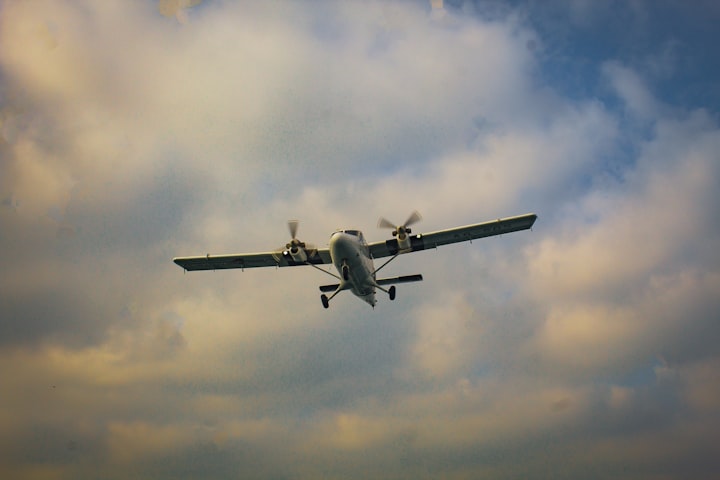Navigating the Skies:
The Enigma Behind Why Every Plane Chooses This Crowded Route Across the Atlantic
The Enigma Behind Why Every Plane Chooses This Crowded Route Across the Atlantic
On an average summer night, approximately 1,500 flights traverse the Atlantic from the United States to Europe, and almost all of them follow a single route, akin to a bustling highway in the sky. These aircraft, separated by a mere 40 miles in distance and 25 miles laterally or vertically, often fly as close as 1,000 feet to each other. Navigating such a densely populated aerial corridor requires meticulous planning and precision, yet the question arises: Why do all these planes converge on a single route, especially when that route is becoming increasingly perilous?
Crossing the Atlantic remains a challenging endeavor, primarily due to the absence of radar coverage over the ocean. As all air traffic radar communication relies on ground-based systems, planes undertaking transatlantic journeys adhere to a structured set of routes known as the North Atlantic Organized Track System (NAT OTS). These tracks, monitored and coordinated by four air traffic planning centers daily, ensure safe separation of planes during their nightly journeys.
The first planning center, located in New York, oversees the corresponding airspace. Gander, Newfoundland, manages the region further east, while the Santa Maria Oceanic Control covers the northern sector. Additionally, Chanwick, a collaborative effort between Prestwick, Scotland, and Shannon, Ireland, manages the airspace in the north. Pilots report their location every 14 minutes, allowing for precise coordination and ensuring the safety of the numerous flights making the transatlantic journey each night.
However, despite such meticulous planning, incidents do occur. For instance, on February 19, 2019, a Boeing 787 experienced a jet streak that propelled it to a speed of 801 miles per hour, 200 miles per hour over its normal speed, coming dangerously close to other planes. To prevent such incidents, the predetermined route must be meticulously coordinated, presenting a complex challenge. So, why do these flights adhere to a single route, and how did this tradition originate?
The practice of following a specific route can be traced back to a Japanese meteorologist in the 1920s, Wasaburo Oishi. Despite being largely ignored outside of Japan, Oishi's discovery of a high-altitude river of air in the sky proved significant. This aerial current, later named the jet stream, was utilized by the U.S. military during World War II for launching hydrogen balloons carrying bombs into this west-to-east flowing river of air. This tactic had tragic consequences when a bomb landed in Bly, Oregon, resulting in fatalities.
Jet streams are fast air currents that blow from west to east around the world, reaching maximum speeds at altitudes of 30,000 to 40,000 feet—typical cruising altitudes for large commercial planes. These streams are crucial for flight efficiency, providing tailwinds that allow planes to traverse the ocean more swiftly and economically.
U.S. commercial pilots began incorporating the jet stream into their flight plans as early as 1952, realizing its practical advantages when traveling from west to east. Merging into the jet stream's tailwinds saved fuel, shortened flight durations, and reduced turbulence. However, a significant challenge arises from the dynamic nature of the jet stream—it constantly shifts.
While the use of the jet stream has been a successful practice for decades, there is a looming problem on the horizon. Recent studies reveal substantial changes in the jet stream between 1979 and 2017, particularly over the North Atlantic. These alterations, attributed to climate change-induced fluctuations in temperatures, lead to increased vertical wind shear, causing a specific type of turbulence known as clear air turbulence (CAT).
Clear air turbulence poses a unique danger as it lacks a visual signature, making it challenging for pilots and radar systems to detect. With the projected intensification of climate change, the University of Reading's scientists anticipate a doubling or tripling of severe turbulence incidents between 2050 and 2080. This development has immediate consequences for passenger safety, with incidents of broken bones already on the rise due to sudden turbulence.
In the face of these challenges, the future of transatlantic flights remains uncertain. The anticipated increase in turbulence, coupled with the dynamic nature of the jet stream, may necessitate a reevaluation of flight planning and coordination. While the current reduction in flights due to the COVID-19 pandemic offers a temporary respite, the long-term impact of climate change on the jet stream poses a significant concern for the aviation industry. The potential consequences include more frequent turbulence-related injuries, changes in flight routes and schedules, and even potential impacts on ticket prices. As the aviation sector grapples with these challenges, the once-efficient aerial highway across the Atlantic may experience more bumps and disruptions in the years to come.
About the Creator
Kwandokuhle Ndethi
Born to express, not to impress.







Comments
There are no comments for this story
Be the first to respond and start the conversation.